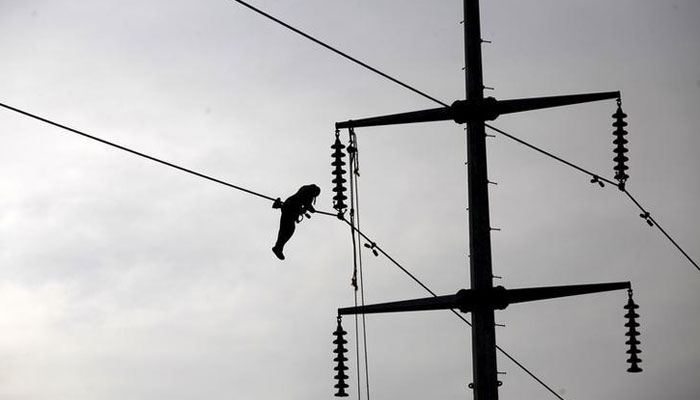Time to conserve energy on a national level Part II
National Energy Efficiency and Conservation Authority has recommended adding energy performance labels on products
February 17, 2022

In the first part of the article, we discussed how innovation in products is playing a major role in energy conservation. Innovation and upgrades in home appliances are also playing a key role in energy efficiency.
In Pakistan, the market for kitchen equipment like food processors, fridges and freezers has expanded tremendously in recent years — around one to 1.5 million units of refrigerators are sold annually. If local producers work on such upgrades, there would be a tremendous energy conservation and efficiency improvement opportunity.
The involvement of producers is likely to result in a lot of improvements in terms of energy conservation. The National Energy Efficiency and Conservation Authority (NEECA) has recommended adding energy performance labels on products. It is hoped consumers’ awareness will create demand for energy-efficient equipment as consumers usually prefer affordable products and are unaware of energy issues.
Read more: Time to conserve energy on a national level
General industrial practices need a lot of attention and improvements. Energy efficiency can affect both competitiveness and partner and buyer industries. Most Pakistani industrialists are more inclined towards seeking incentives and low energy tariffs but are less sensitive to energy conservation and efficiency issues.
Both awareness and technical know-how are required for dealing with this issue. Small and medium enterprises (SMEs) can provide technical assistance to industrialists.
NEECA has released the first draft of an energy conservation policy — the National Energy Efficiency and Conservation Programme (NEECP) — for the review and comments of stakeholders.
The subject of energy efficiency and conservation is not new in Pakistan. NEECA’s precursor Enercon was formed in 1987 and received technical support and grant financing from USAID.
An energy conservation policy was presented in 2006. Some reports were drafted and the required documentation work was done, but the policy couldn’t prove to be fruitful. Subsequently, the National Energy Efficiency and Conservation Act was passed in 2016 as a result of which NEECA was established.
The institution is yet to meet its requirement of the workforce. It has, however, done some foundation work like the preparation of a policy document and the development of some useful standards and a labelling scheme.
There seems to be a lot of work in progress that has yet to come under public domain. Lessons should be learnt from past mistakes. NEECA should find out what went wrong in earlier efforts and what should not be repeated.
The NEECP draft seems a good policy. Almost nothing has been left out; this, surprisingly, has invited criticism of some credible experts and institutions. The policy’s defenders may argue that a foundation policy document has to be comprehensive, but due to bad experiences of the past, people now want coherent targets.
There is no doubt that the policy seems ambitious as well, but it needs to be prioritised. The first part of this article identified the sectors that needed innovation.
The building sector, electric motor and pump manufacturing units, industrial systems, and household electrical equipment manufacturing units are a few areas which are likely to achieve the energy conservation and efficiency targets if the authorities prioritise them. Transport and power systems undertake their development activities and are determined by international suppliers and companies.
The power sector is big enough to undertake its conservation and efficiency projects. Electric vehicles are far away, and delving into it from the point of view of energy conservation may not be either a priority or within the capabilities of the local systems.
There is a strategic plan (2020-2023) which is unnecessarily too big for the available period. It may be good enough for 10 years. We are in the mid-period of the plan, and the failures are already evident. Even though funds are available, under climate agendas and emergencies, for the execution of the plan, only money isn’t required. The country needs a more concrete and prioritised plan which is accepted by experienced stakeholders.
The recently announced draft has the following items on its agenda: minimum energy performance standards, energy performance labelling schemes, energy information clearing houses, energy audit, technical services and support, and financing policy support.
However, the draft hasn’t talked about one important item — the development of model and pilot facilities. For example, model energy efficient buildings in all major towns may go a long way in developing the understanding of their benefits and the processes required. These houses can be installed with insulated walls and roofs, glazed windows, solar PV systems, water heaters and other energy efficient devices to demonstrate what a ‘model house’ is.
The most useful work yet carried out by NEECA is the development of an energy efficiency labelling scheme. Energy efficiency labels give ample guidance to consumers/buyers to compare a product’s prices to its energy consumption levels — most household appliances are under NEECA’s labelling scheme. Fan manufacturing units are at the advanced stage of the implementation of the policy.
It is hoped that this step would create market pressure for energy efficiency. As a result, energy products and producers may end up getting ‘market preference’ in terms of better prices and market share in the medium- to long-term.
In energy efficiency businesses, consumer awareness is a major issue. Ordinary citizens form to be the main actor. Their decisions and perceptions usually create market pressures. Industrial and business customers and users may have the resources and skills to acquire knowledge and information.
Thus, communication and extension activities should form a major part of the institutional conservation efforts. Since the media can play an effective role in this regard, it should receive sufficient budgetary resources.
NEECA will continue to suffer from an institutional mismatch as it is part of the power division. Its conservation agenda seems to be more focused on the electrical side. But since the power division comes under the Ministry of Energy, there will be a few bottlenecks. It is hoped this policy succeeds in achieving its targets as energy- and climate-related challenges are mounting.
The writer is a former member of the Energy Planning Commission and author of ‘Pakistan’s Energy Issues: Success and Challenges’. He can be reached at: [email protected]
Originally published in The News









